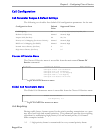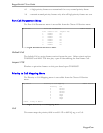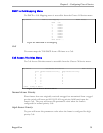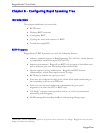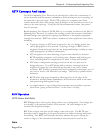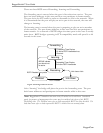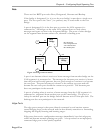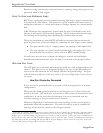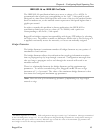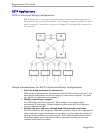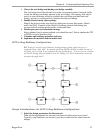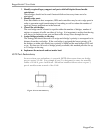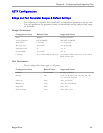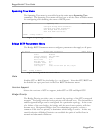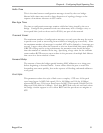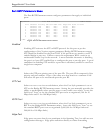
Chapter 6 – Configuring Rapid Spanning Tree
IEEE 802.1d vs. IEEE 802.1w Costs
The IEEE 802.1d specification limits port costs to values of 1 to 65536. It
recommends that a path cost corresponding to the 1x10
9
/ link speed be used.
Designed at a time when 9600 bps links were state of the art, this method breaks
down in modern use, as the method cannot represent a link speed higher than a
gigabit per second.
In order to remedy this problem in future applications the IEEE 802.1w
specification limits port costs to values of 1 to 200000, with a path cost
corresponding to the 2x10
12
/ link speed.
RuggedCom bridges support interoperability with legacy STP bridges by selecting
the style to use. In practice it makes no difference which style is used as long as it
is applied consistently across the network, or if costs are manually assigned.
Bridge Diameter
The bridge diameter is maximum number of bridges between any two points of
attachment of end stations.
The bridge diameter reflects the realization that topology information requires
time to propagate hop by hop through a network. Configuration messages that
take too long to propagate end to end through the network will result in an
unstable network.
There is a relationship between the bridge diameter and the maximum age
parameter
3
. To achieve extended ring sizes, RuggedCom RSTP uses an age
increment of ¼ of a second. The value of the maximum bridge diameter is thus
four times the configured maximum age parameter.
Note:
Raise the value of the maximum age parameter if implementing very large bridged
networks or rings.
3
The RSTP algorithm is as follows. STP configuration messages contain “age” information. Messages transmitted
by the root bridge have an age of 0. As each subsequent designated bridge transmits the configuration message it
must increase the age by at least 1 second. When the age exceeds the value of the maximum age parameter the
next bridge to receive the message immediately discards it.
RuggedCom
45



